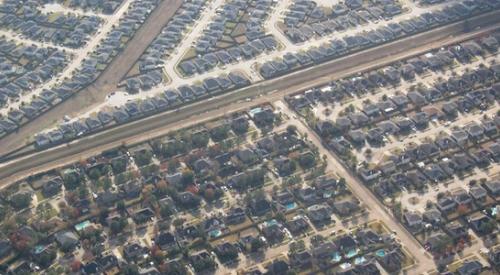|
Move over, metropolitan markets, the megapolitans are coming. Estimating housing needs for 83 million more U.S. residents by 2040, researchers at the Metropolitan Institute at Virginia Tech are predicting a $25-trillion housing boom. To account for this growth and development, they have created 10 super-sized market areas they call megapolitan areas, or simply megapolitans.
The Institute defines a megapolitan as a network of clustered cities to exceed 10 million residents by 2040. More than a chain of contiguous cities, each is seen as a "functional urban network" with larger regional identity, a transportation infrastructure, a flow of people, goods and services and the capability for regional planning.
Megapolitans create "American versions of Europe," Robert Lang, director of the Metropolitan Institute, says. He cites the regions' ability to provide "much greater connectivity in infrastructure, and have much greater coordination in planning."
A look at the map of the new market areas (at right) shows them occupying less than a 1/5 of the 2.96 square miles of land in the lower 48 states. Megapolitans touch 35 states, and include 39 of the nation's 50 most populous metro areas. Furthermore, these megapolitans will account for 71.1 percent of the housing units built from 2005 to 2040.
Some sizeable markets are left out. For example, Minneapolis is dubbed an "isolate." Denver along with the Colorado Front Range, could be form a "secondary megapolitan" with 2040 population projected at eight million.
Schools and the local governments are backing the research with an eye toward official adoption by the U.S. Census Bureau. The Bureau has already started on this path with new definitions in 2003 and 2004. "Micropolitan Statistical Area" defines the nearly 600 markets with population between 10,000 and 50,000; "central city" replaced "principal city;" and Combined Statistical Areas were created, based on counties.
Counties are also are the "building blocks" for creating megapolitans, Lang says. He adds that builders can now create their own versions of megas because "you can put the puzzle together any way you want with data available today."
Recent research provided the foundation for the proposed mapping. Looking at recent trends, demographer William H. Frey with the Brookings Institute noted the beginnings of a "slowdown and reshuffling" of the U.S. population. Fast-growing metro areas including San Jose, San Francisco and Boston became some of the slowest-growing areas from 2000 to 2004, while more affordable areas outside major cities became some of the fastest population gainers.
Yet another report from Brookings and Virginia Tech estimated that by 2030, roughly half the buildings in the U.S. will have been built after 2000, led by residential development. It noted that most new growth — 87 percent — will come from the South and West. That report also predicted increasing demand "for compact, walkable and high-quality loving, entertainment and work environments;" and more pressure on jurisdictions to tighten growth controls in an effort to deal with infrastructure and resource challenges such as water availability.
|












